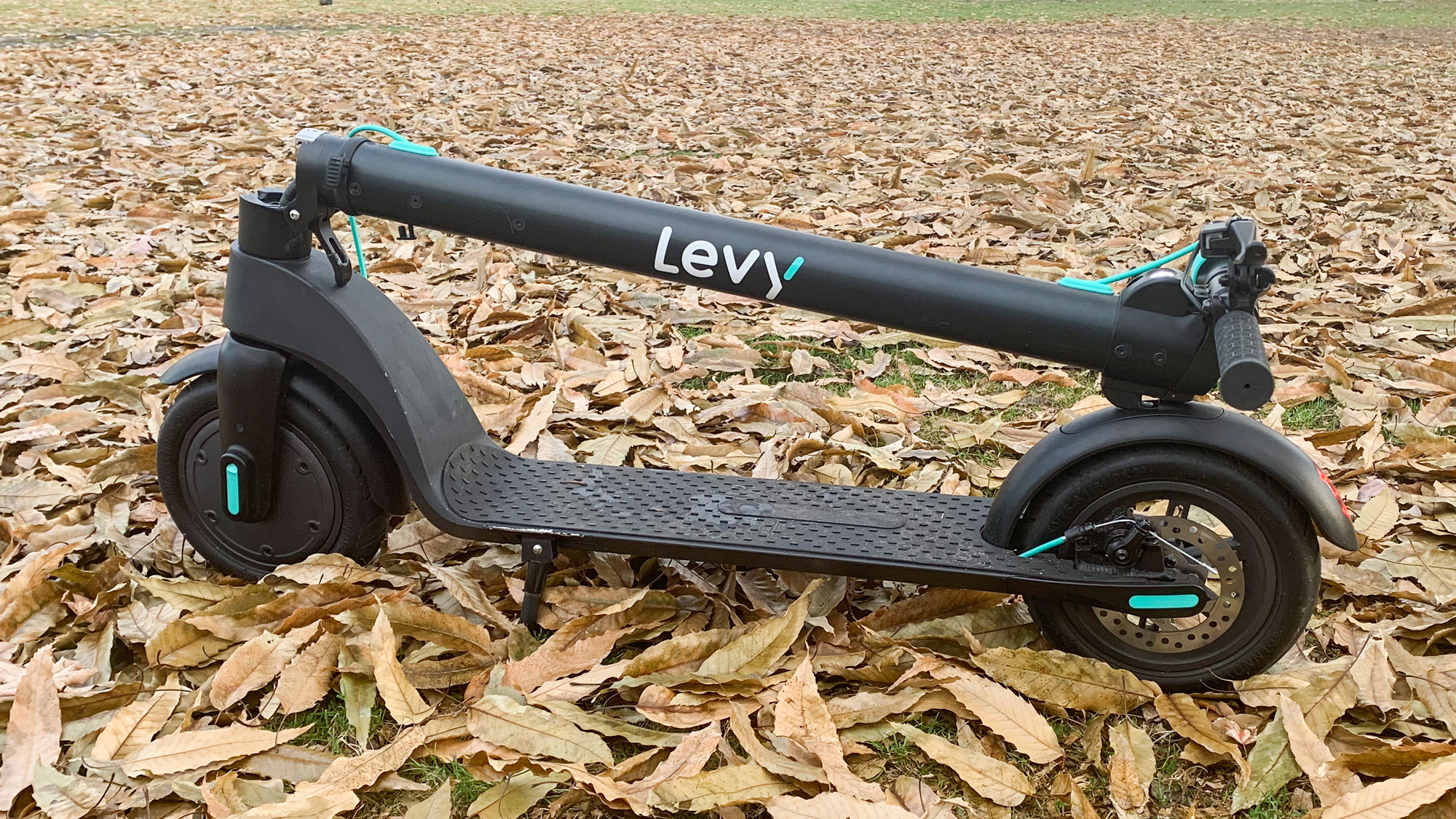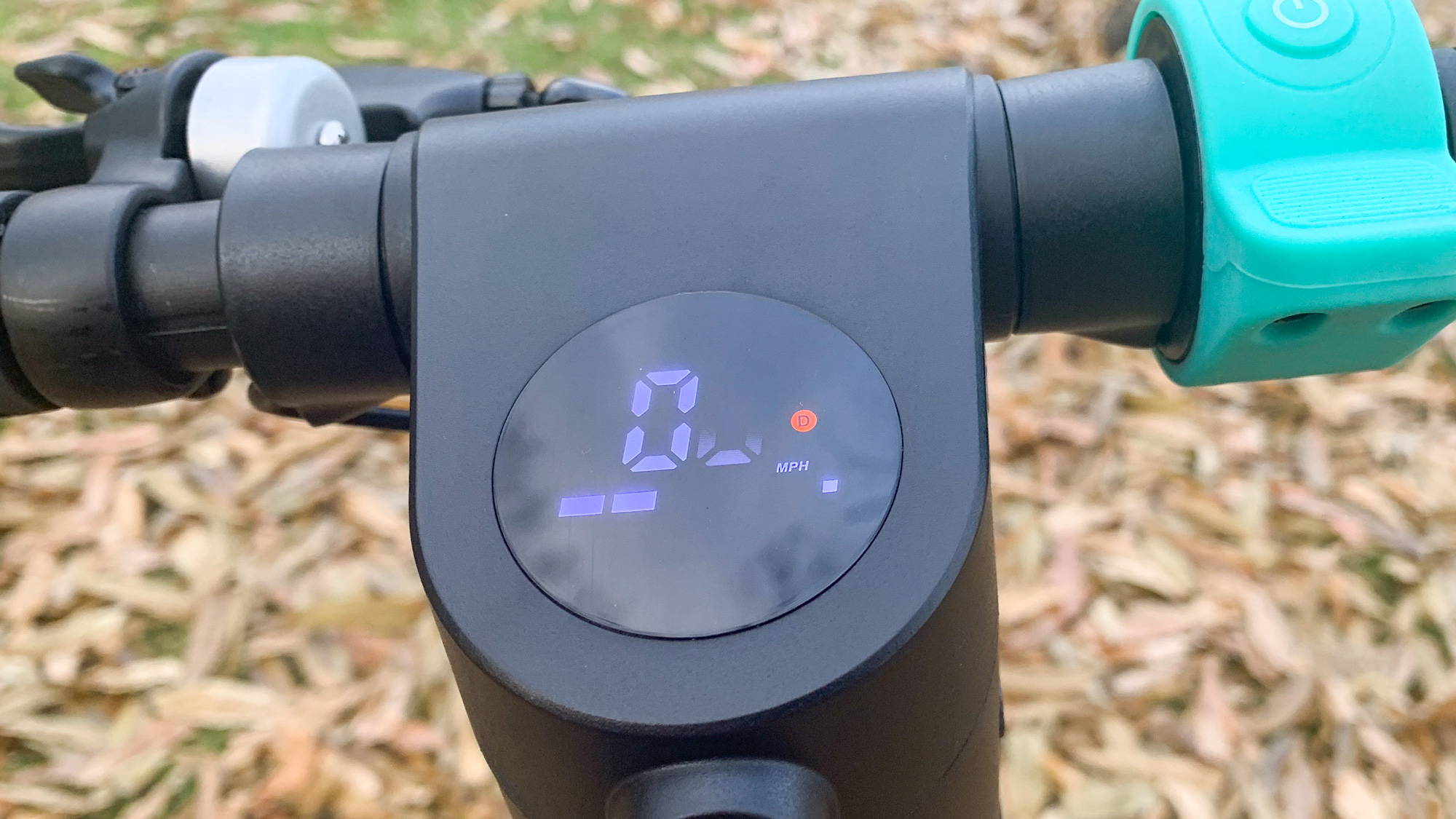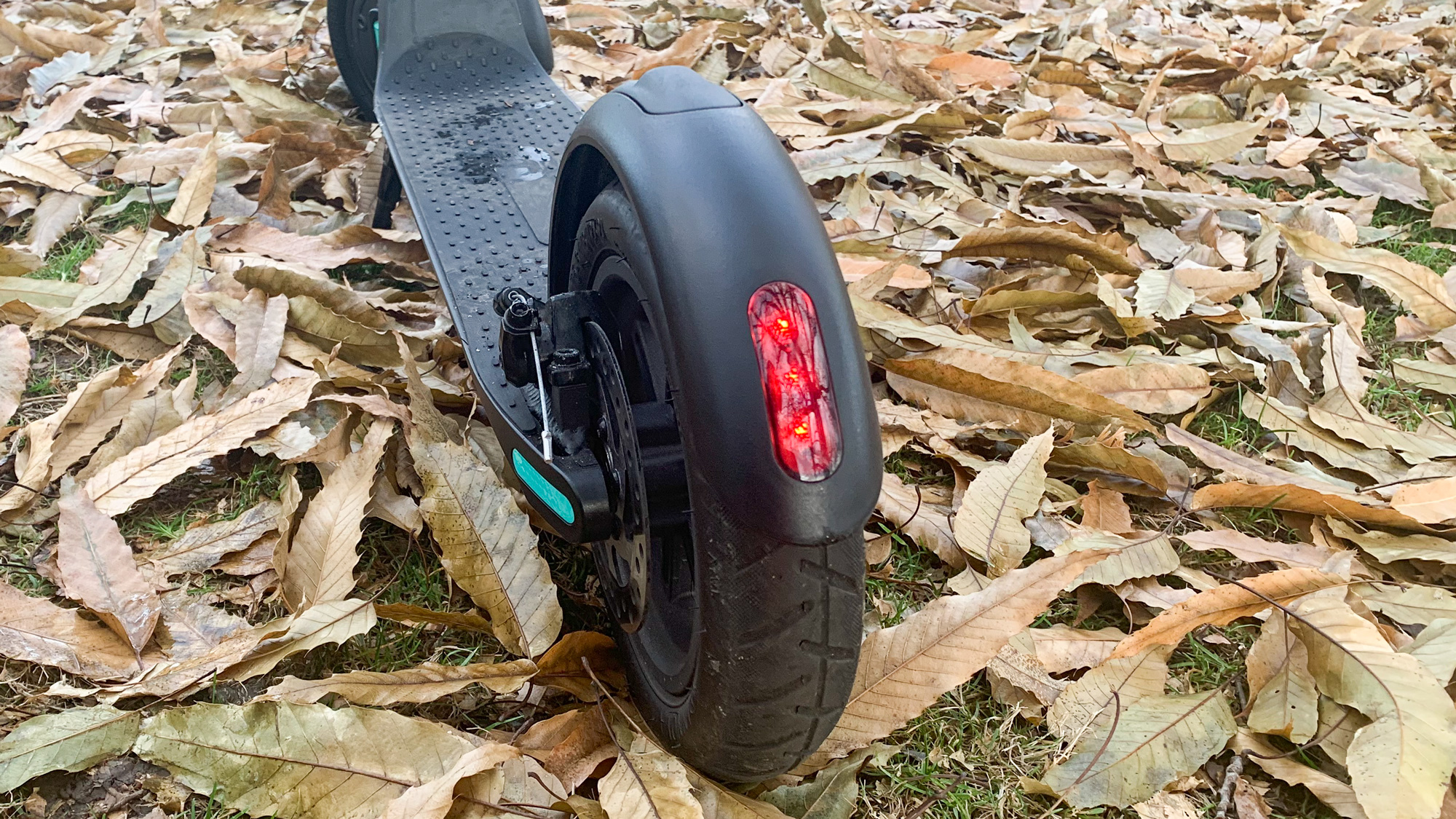Tom's Guide Verdict
An excellent electric scooter with a smooth ride and plenty of power.
Pros
- +
Smooth ride
- +
Powerful motor
- +
Replaceable battery
- +
Bright display
Cons
- -
Non-adjustable headlight
- -
Vague power readings
Why you can trust Tom's Guide
There’s nothing more aggravating than when your gadget’s battery runs out of juice. For some devices, it’s an annoying inconvenience, but for others it can be a big problem. Priced at $499, the Levy electric scooter’s removable battery means you can always have a spare on hand, ensuring that you don’t get stranded during a long ride. And this is one scooter you’ll want to ride for a while, too. Its smooth motion and powerful motor make it one of the best electric scooters we’ve tested.
Levy Electric Scooter design

The Levy is a nice-looking electric scooter. While a few wires protrude here and there, it keeps a sleek profile. When unfolded, the Levy measures 49.5 inches tall and is 41.5 inches long. When folded, it measures 17 inches high, which was small enough to fit underneath a train seat. However, unlike the Glion Dolly, the Levy’s handlebars do not fold in, so it’s a bit bulkier.
The scooter is available in three color variations: black with turquoise accents, black with red accents, and blue accents with a silver front post.
Levy Electric Scooter controls and display

The controls for the Levy are spartan but effective. On the right side is a thumb throttle that has a power button and a menu button. Using just these two buttons, you can set cruise control, switch between the three speed modes, and turn the scooter’s headlight on and off.

A circular light-emitting diode (LED)) display, roughly the size of a silver dollar, sits in the middle of the handlebars. It’s a very bright display, and was easily readable in full sunlight. The screen shows your speed and approximate remaining battery life. I say approximate, because on some rides, the screen would show two bars of battery life, but the scooter would refuse to move unless I was on a level or downhill grade.

Levy Electric Scooter replaceable battery

Unlike most electric scooters, which have their battery built into the deck, the Levy’s battery is inside the downtube. It’s also removable, so you can swap it out for a replacement on the fly. (Replacements cost $140 each). While I can’t imagine many scenarios in which you’d need a spare battery — maybe if you use it for deliveries), it’s a nice feature. However, this also makes the downtube thicker than on other scooters, so those with smaller hands may have more trouble carrying the Levy.

In the middle of the handlebars is a small LED headlight, which wasn’t as powerful (nor adjustable) like the Glion Dolly, but it kept the road ahead illuminated. The Levy also has a tail light, which also flashes whenever you apply the brakes. It’s a smart feature that all electric scooters should adopt.
Get instant access to breaking news, the hottest reviews, great deals and helpful tips.

Levy Electric Scooter performance and battery life

Size (unfolded): 49.5 x 41.5 x 17 inches
Wheel size: 8.5 inches
Weight: 27 pounds
Max rider weight: 230 pounds
Max speed: 18 mph
Max range: 15 miles
Motor: 350-watt, front-wheel drive
Battery: 36V, 6.4aH
Charging time: 3.5 hours
The Levy’s tubeless tires are air-filled, which I’ve found do more to ensure a smooth ride than anything else. Riding over potholes and sidewalk cracks was much less jarring than with the Glion Dolly, which has rubber wheels. Because the Levy’s wheels are air-filled, they are prone to punctures (though this didn’t happen in my testing); spares cost $10 apiece.
Powered by a front-wheel-drive, 350-watt motor, the Levy was one of the zippiest scooters I’ve used. I was impressed with its speed — up to 18 miles per hour—as well as its ability to get my 200-pound body up inclines with ease. It took me up hills better than the Glion and the Swagtron Swagger 5.
I also liked the Levy’s cruise-control feature. When enabled, the scooter would stay at a consistent speed as long as I maintain that speed for a few seconds. This option keeps you from having to hold your thumb on the throttle, and a simple tap of the brakes turns off cruise control.

The Levy has a rear disc brake, which was very effective. Because the scooter uses a traditional hand grip (on the left handlebar), I found I was able to apply just the right amount of pressure.
The battery was beefy enough to keep me riding through my entire six-mile test course, with a little juice left over. However, there was only enough power for riding on a level or downhill surface: The motor would stop if I tried going uphill.
Bottom Line
The Levy is one of the best electric scooters for $500. It’s powerful, comfortable and has a number of smart features. Those who plan to take the device scooter on public transportation should check out the Glion Dolly (also $499), as it has more commuter-friendly features, but overall, the Levy provides a smoother ride for the money.

Michael A. Prospero is the U.S. Editor-in-Chief for Tom’s Guide. He oversees all evergreen content and oversees the Homes, Smart Home, and Fitness/Wearables categories for the site. In his spare time, he also tests out the latest drones, electric scooters, and smart home gadgets, such as video doorbells. Before his tenure at Tom's Guide, he was the Reviews Editor for Laptop Magazine, a reporter at Fast Company, the Times of Trenton, and, many eons back, an intern at George magazine. He received his undergraduate degree from Boston College, where he worked on the campus newspaper The Heights, and then attended the Columbia University school of Journalism. When he’s not testing out the latest running watch, electric scooter, or skiing or training for a marathon, he’s probably using the latest sous vide machine, smoker, or pizza oven, to the delight — or chagrin — of his family.

